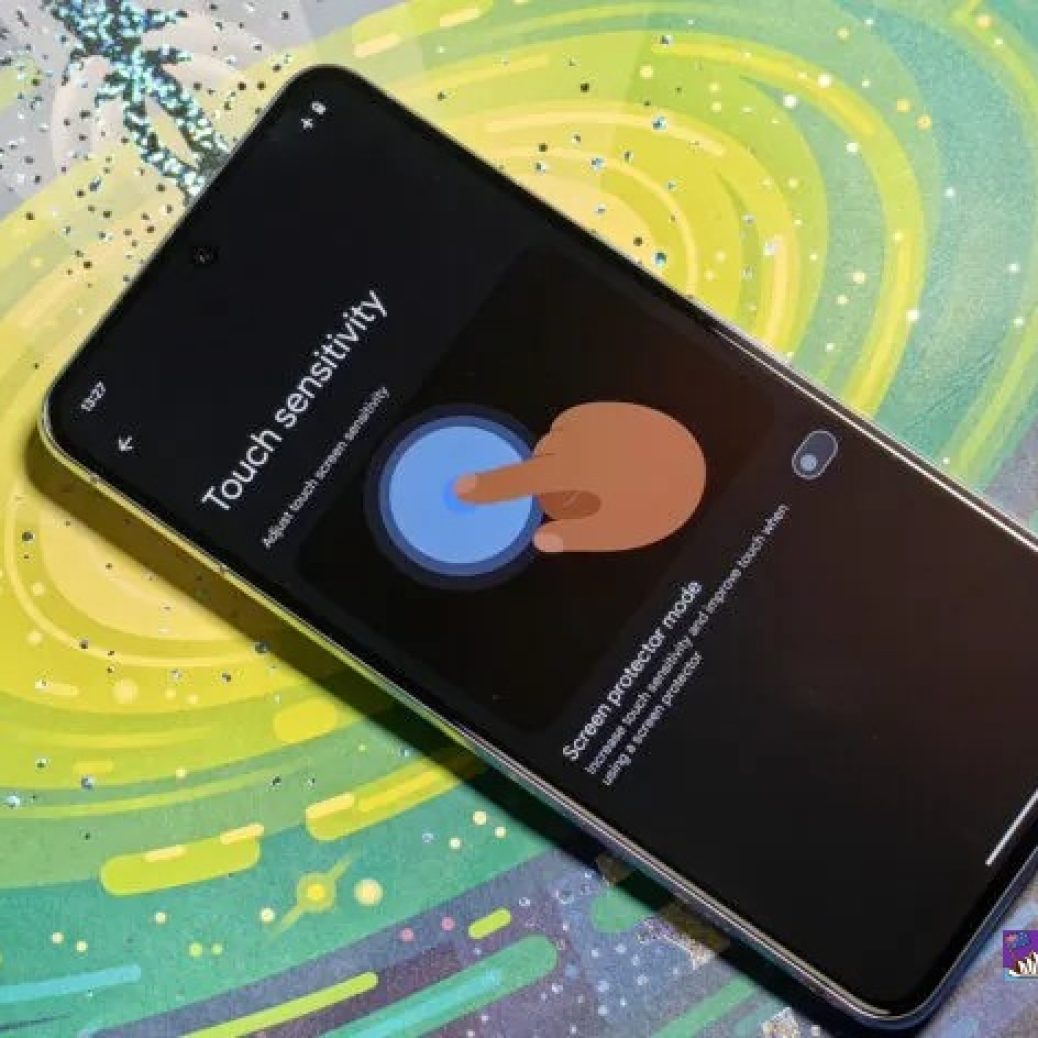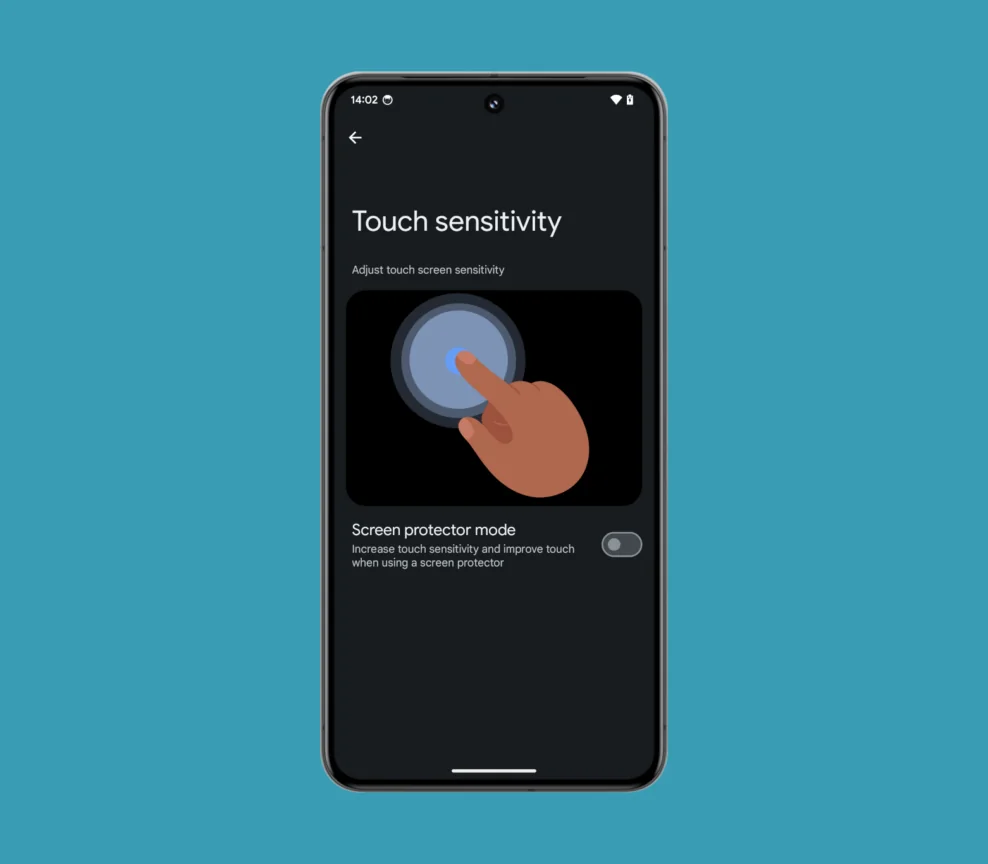❤ Google Pixel 9 may get ‘Adaptive Touch’ feature to automatically adjust sensitivity
Google appears to be working on a new Pixel feature called “Adaptive Touch” which will be able to adjust sensitivity of the touchscreen automatically based on certain factors.
On Pixel phones, users have been able to, for a while now, boost the touchscreen’s sensitivity when a screen protector is applied. On Pixel 8, Google even made that automatic. Now, Google appears to be working on a new “Adaptive Touch” option that bring this ability a step further.
As spotted by Android Authority, Android 14 QPR3 Beta 2 labels “Adaptive Touch” as a feature for 2024 Pixel devices, meaning it’s likely set to debut with the Pixel 9 series. The feature would allow the touchscreen sensitivity to be adjusted based on certain factors. Google describes:
…touch sensitivity will automatically adjust to your environment, activities and screen protector.
It’s not clear exactly how this will work, but it seems likely that this would include the automatic boost we saw on Pixel 8 extend to other cases. A wet screen, wearing gloves, or a boost when playing games are other places where this could feasibly come in handy.
Notably, OnePlus last year debuted “Aqua Touch” on the OnePlus 12 which delivered impressive touchscreen response on a wet display, so this “Adaptive Touch” could be Google’s play at something similar.
It also remains to be seen if this feature would make its way back to existing hardware, but given another new feature Google is working on is exclusive to newer hardware, it seems likely that it won’t.
- Your phone’s touch sensitivity determines how well the screen reacts to your touches.
- Various factors like how wet your fingers are or whether a screen protector is applied can affect how sensitive your phone’s screen feels.
- The Pixel 9 may add an “Adaptive Touch” feature that automatically adjusts touch sensitivity to account for these factors.
If you’ve ever tried to swipe through your phone on a rainy day, you’re probably aware of how finicky it can be. Wet fingers can disrupt the ability for capacitive touch screens to register your touch, causing your tap or swipe inputs to be dropped. Thick or low-quality screen protectors can also reduce your phone’s touch sensitivity. For these reasons, many phones offer touch sensitivity settings or at least a dedicated “screen protector mode” to boost the touch sensitivity. The upcoming Google Pixel 9 may take things a step further by offering an automatic “Adaptive Touch” mode.
While I was digging through last month’s Android 14 QPR3 Beta 1 release, I found evidence that suggests Google is preparing to add an “Adaptive Touch” setting under Settings > Display > Touch sensitivity. Although the setting doesn’t currently show up on my Google Pixel 8 Pro running the latest Android QPR beta, I dug into the code and found that when Adaptive Touch is enabled, “touch sensitivity will automatically adjust to your environment, activities and screen protector.”
Touch sensitivity settings on a Google Pixel 8 Pro running Android 14 QPR3 Beta 2.
It’s not quite clear yet what environmental factors or activities will cause the touch sensitivity to be automatically adjusted, but it’s possible that wet fingers (or a wet screen) will be one factor. Google may be taking inspiration from the OnePlus 12 and its Aqua Touch feature that adjusts the touch sensitivity when the phone is wet, making it possible to use the phone in the rain.
Adaptive Touch is said to also automatically adjust the touch sensitivity when a screen protector is detected. With the launch of the Pixel 8 series, Google quietly debuted a new “screen protector detector” service that can detect when the user puts a screen protector on or takes one off. The OS then informs the user that they should enable or disable screen protector mode accordingly.
When I first discovered the code for “Adaptive Touch” in Android 14 QPR3 Beta 1, I wasn’t sure if this feature would be coming to existing Pixels or if it would be reserved for upcoming devices like the Google Pixel 8a and Pixel 9. Now, however, I’ve found evidence that links this upcoming “Adaptive Touch” feature to Google’s 2024 flagship Pixel lineup.
Code within the latest Android 14 QPR3 Beta 2 release reviewed by Android Authority explicitly labels “Adaptive Touch” as a “P24” feature. Google often uses shorthands like “P2X” internally to refer to their Pixel devices for a particular year. “P23”, for example, refers to the Pixel 8 and Pixel 8 Pro because they were released in 2023. The Pixel 7a was also released in 2023, but it’s referred to as “P23_MIDYEAR” because it was released in the middle of the year. Thus, if we’re going by past history, then “Adaptive Touch” may be a Pixel 9 feature.
However, we don’t know if “Adaptive Touch” will be exclusive to the Pixel 9 or if it’ll eventually trickle down to older devices. While Google does bring a lot of new features to older Pixel devices through their quarterly Pixel Feature Drop updates, they also intentionally leave out some features that older Pixels are technically capable of running. The company does this to differentiate its product lineup and make newer devices seem more appealing, but it remains to be seen if the Pixel 9’s Adaptive Touch feature will be worth keeping as an exclusive.





